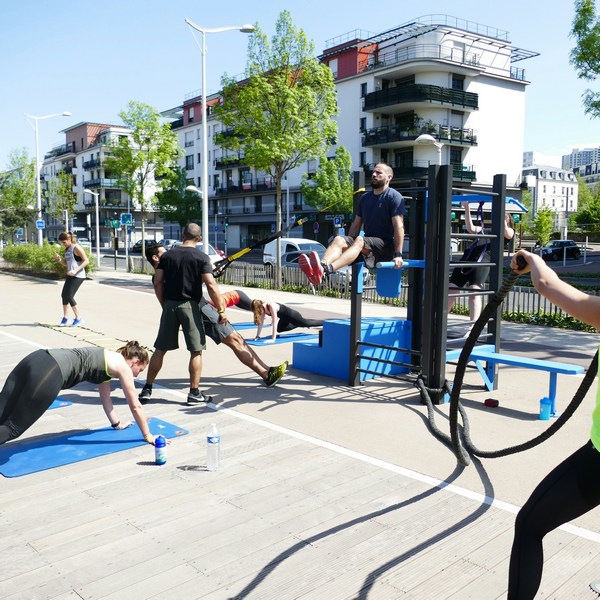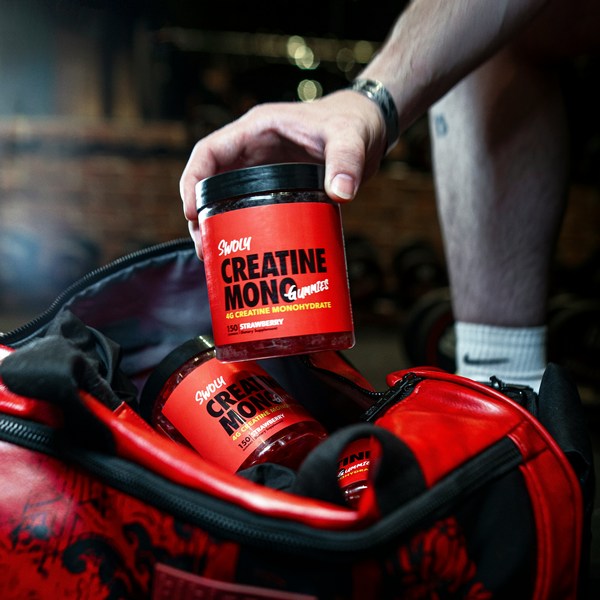Key Highlights
- Resistance training builds muscle strength and endurance.
- Utilizes equipment like free weights, bands, or body weight.
- Benefits include increased metabolism and improved bone density.
- Important to have suitable equipment and a training space.
- Beginners should learn basic movements and develop a plan.
- Safety is crucial to prevent injuries and manage progression.
Table of Contents
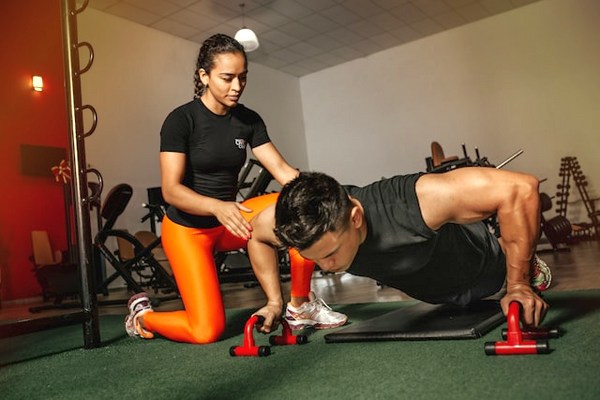
Resistance training, also known as strength training or weight training, is a popular form of exercise that involves using resistance to build muscle strength and endurance.
It can be done with various types of equipment such as free weights, resistance bands, or even just using your own body weight.
Understanding Resistance Training
By challenging your muscles to work against external resistance, such as weights or resistance bands, you can stimulate muscle growth, increase your muscle strength, and improve your overall fitness level.
The Science Behind Muscle Growth and Strength
When you perform resistance exercises, the muscles are subjected to stress, which causes microscopic damage to the muscle fibers. After the workout, the body repairs and rebuilds these damaged muscle fibers, resulting in increased muscle size and strength.
The Benefits of Resistance Training
These benefits make resistance training a valuable addition to any fitness program, regardless of your age or fitness level.

Physical Health Improvements
Resistance training offers several physical health improvements that are crucial for overall well-being. Some of these benefits include:
- Increased bone density: Resistance training stimulates bone growth, improving bone density and reducing the risk of osteoporosis.
- Improved cardiovascular health: Regular resistance training can lower blood pressure, improve cholesterol levels, and enhance overall cardiovascular function.
- Lowered risk of chronic diseases: Resistance training has been linked to a reduced risk of chronic conditions such as heart disease, diabetes, and certain types of cancer.
- Enhanced muscular strength and endurance: Resistance exercises help build strength and endurance, making everyday tasks easier and reducing the risk of injuries.
Mental Health Advantages

In addition to its physical benefits, resistance training also has several advantages for mental health. Regular resistance exercise can:
- Reduce symptoms of depression and anxiety: Resistance training has been shown to improve mood, decrease symptoms of depression, and reduce anxiety levels.
- Boost self-esteem and body image: Improvements in physical appearance and strength can lead to increased self-confidence and a positive body image.
- Act as a stress reliever: Resistance training provides an outlet for stress and helps release endorphins, which can improve overall mood and reduce stress levels.
Longevity and Quality of Life Enhancements
Resistance training can have a significant impact on longevity and overall quality of life. Some of the benefits include:
- Longevity: Studies have shown that regular resistance training is associated with a longer lifespan and a reduced risk of premature death.
- Enhanced everyday activities: Increased muscle strength and endurance from resistance training can make daily tasks, such as lifting groceries or climbing stairs, easier and more manageable.
- Improved quality of life: By improving physical function, reducing the risk of chronic diseases, and enhancing mental well-being, resistance training can greatly enhance overall quality of life.
Preparing for Resistance Training
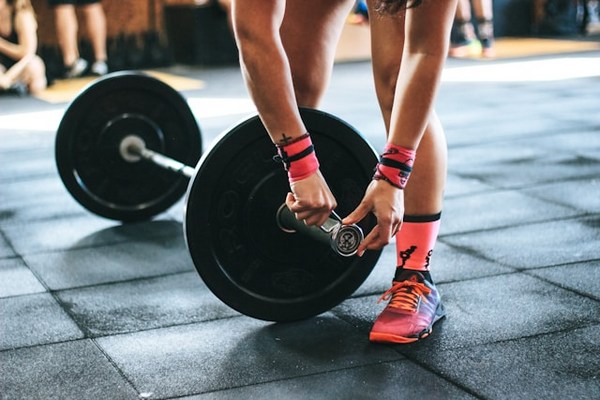
Before starting resistance training, it’s essential to prepare yourself both mentally and physically.
- Gather essential equipment: Depending on your preferences and goals, gather equipment such as free weights, resistance bands, or weight machines.
- Set up your training space: Create a designated area at home or join a gym with the right equipment and space to perform resistance exercises.
- Consider working with a personal trainer: A certified personal trainer can guide you through proper form and technique, create a personalized training plan, and ensure safety during your workouts.
Essential Equipment for Beginners
When starting resistance training, it’s important to have the necessary equipment to perform exercises effectively.
- Free weights: Dumbbells and barbells are versatile tools that can be used for a wide range of resistance exercises.
- Resistance bands: These bands provide constant tension throughout the movement and are excellent for targeting specific muscle groups.
- Weight machines: Gym machines offer stability and guidance, making them suitable for beginners who may need assistance with proper form.
- Bodyweight exercises: Exercises that use your own body weight, such as push-ups and squats, can be effective for resistance training without any equipment.

Setting Up Your Training Space
Creating a suitable training space is crucial for effective resistance training.
- Choose a designated area: Select a space in your home or join a gym that provides ample room for you to perform resistance exercises comfortably.
- Clear the area: Remove any obstacles or clutter that may hinder your movements during workouts.
- Ensure proper lighting and ventilation: Optimize your training space with adequate lighting and ventilation to create a comfortable environment.
- Consider working with a personal trainer: A certified personal trainer can help you set up your training space and guide you through exercises with proper form and technique.
A Beginner’s Guide to Starting Resistance Training

If you’re new to resistance training, it’s important to start slowly and gradually increase the intensity of your workouts.
- Step 1:
- Understand your fitness level: Assess your current fitness level and consult with a personal trainer to determine the appropriate starting point for your resistance training journey.
- Step 2:
- Learn basic resistance movements: Familiarize yourself with fundamental resistance exercises that target major muscle groups, such as squats, lunges, push-ups, and rows.
- Step 3:
- Create your first training plan: Develop a workout routine that incorporates a variety of resistance exercises and specifies the number of repetitions and sets for each exercise.
Step 1: Understanding Your Fitness Level
Before starting your resistance training journey, it’s crucial to understand your current fitness level.
- Evaluate your overall fitness: Consider factors such as strength, flexibility, and cardiovascular endurance to gain a better understanding of your starting point.
- Consult with a personal trainer: Working with a certified personal trainer can provide valuable insights into your current fitness level and help you set realistic goals.
- Perform fitness assessments: Assessments such as body composition analysis, strength tests, and cardiovascular fitness tests can provide specific measurements of your fitness level.
Step 2: Learning Basic Resistance Movements
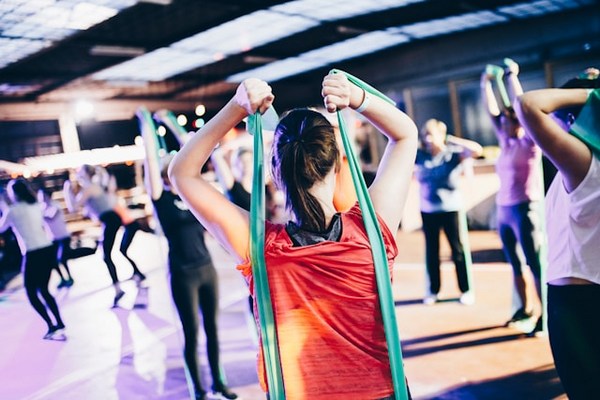
Learning basic resistance movements is essential for effective resistance training.
- Squats: Targets the lower body, including the quadriceps, hamstrings, and glutes.
- Lunges: Engages the lower body and improves balance and stability.
- Push-ups: Targets the chest, shoulders, and triceps.
- Rows: Works the upper back, shoulders, and biceps.
- Shoulder press: Strengthens the shoulders and upper body.
- Deadlifts: Targets the back, hips, and legs.
These exercises are a great starting point for beginner resistance training. Focus on mastering proper form and technique before progressing to more advanced movements.
Step 3: Creating Your First Training Plan
To create your first resistance training plan, consider the following factors:
- Exercise selection: Choose a variety of exercises that target different muscle groups to ensure a well-rounded workout.
- Repetitions and sets: Determine the number of repetitions (reps) and sets for each exercise. Start with a lower number and gradually increase as you progress.
- Rest periods: Allow sufficient rest between sets to recover and maintain intensity during your workout.
- Progression: Continually challenge yourself by gradually increasing the intensity, such as adding more weight or performing more repetitions.
Safety Measures and Tips

Safety should be a top priority when engaging in resistance training. Follow these safety measures and tips to minimize the risk of injury:
- Use proper form and technique: Learn the correct way to perform each exercise to prevent strain or injury.
- Warm-up before exercising: Incorporate a dynamic warm-up routine to prepare your muscles and joints for the workout.
- Cool down and stretch: After your workout, cool down with light aerobic exercise and stretch to improve flexibility and prevent muscle soreness.
- Listen to your body: Pay attention to any pain or discomfort and modify or stop an exercise if necessary.
- Consider working with a certified personal trainer: A professional trainer can provide guidance, ensure safety, and prevent injury during your resistance training sessions.
Proper Form and Technique
Using proper form and technique is essential for effective and safe resistance training. Consider the following guidelines to ensure proper form:
- Maintain proper alignment: Keep your body in proper alignment during each exercise, with a neutral spine and engaged core.
- Start with lighter weights: Begin with lighter weights to focus on mastering proper form before progressing to heavier loads.
- Control the movement: Avoid swinging or using momentum to lift weights. Instead, focus on controlled and deliberate movements.
- Seek guidance from a certified personal trainer: Working with a certified personal trainer can help you learn proper form and technique and reduce the risk of injury.
Preventing Injuries

Preventing injuries is crucial for long-term success in resistance training. Follow these tips to minimize the risk of injuries:
- Warm-up: Before starting your resistance training session, warm up with dynamic exercises such as jogging or jumping jacks to increase blood flow and prepare your muscles for the workout.
- Use appropriate weights: Choose weights that challenge your muscles without compromising proper form and control.
- Progress gradually: Increase the intensity and duration of your workouts gradually to allow your muscles and joints to adapt.
- Incorporate rest days: Allow your muscles time to recover and repair by incorporating rest days into your training schedule.
- Cool down and stretch: After your workout, cool down with light aerobic exercise and perform static stretches to improve flexibility and prevent muscle tightness.
By following these injury prevention measures, you can minimize the risk of injuries and continue to progress in your resistance training journey.
Progressing in Resistance Training
Once you have established a solid foundation in resistance training, it’s important to progress and challenge yourself to continue seeing results. Here are some tips for progressing in resistance training:
- Increase intensity: Gradually increase the weight or resistance you use to continue challenging your muscles.
- Vary your exercises: Incorporate new exercises and variations to keep your workouts fresh and prevent plateauing.
- Adjust volume and frequency: Increase the number of sets and repetitions or the frequency of your workouts as your fitness level improves.
- Listen to your body: Pay attention to how your muscles feel and adjust your workout intensity and duration accordingly.
By consistently progressing in your resistance training, you can continue to build strength, endurance, and achieve your fitness goals.
When to Increase Intensity or Weight

Knowing when to increase the intensity or weight of your resistance training is crucial for continued progress. Consider the following factors:
- Form and technique: Ensure that you can maintain proper form and technique throughout the exercise before increasing the intensity or weight.
- Consistency: Maintain a consistent workout routine and master the current level of intensity before progressing.
- Muscle adaptation: If you no longer feel challenged by the current weight or intensity, it may be time to increase the resistance to continue stimulating muscle growth and strength.
Tracking Your Progress Effectively
Tracking your progress is crucial for monitoring your resistance training journey and ensuring continuous improvement. Here are some effective ways to track your progress:
- Maintain a workout log: Record the exercises, sets, repetitions, and weights used for each workout to track your progress over time.
- Take measurements: Regularly measure key areas of your body, such as waist circumference or muscle size, to monitor changes in body composition.
- Use a text table to track your progress:
| Exercise | Sets | Repetitions | Weight Used | |
| Squats | 3 | 10 | 50 lbs | |
| Bicep curls | 2 | 12 | 15 lbs | |
| Push-ups | 3 | 8 | Bodyweight | |
| Use progress photos: Take photos of yourself at regular intervals to visually track changes in muscle definition and body composition. |
Overcoming Common Challenges
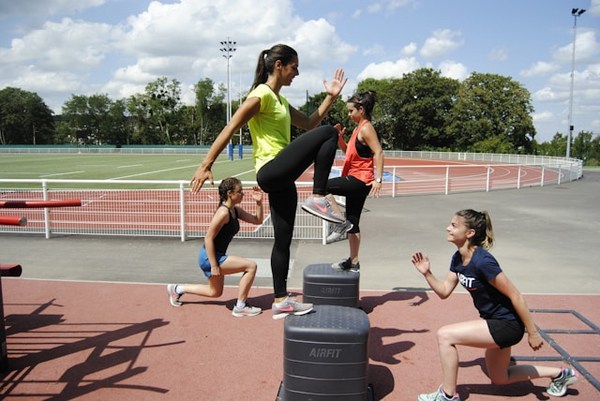
Resistance training can come with challenges, but with the right mindset and strategies, you can overcome them. Here are some tips for overcoming common challenges in resistance training:
- Staying motivated: Set realistic goals, track your progress, and find a training buddy or support system to stay motivated and accountable.
- Breaking plateaus: Modify your workout routine by incorporating new exercises, increasing intensity or varying sets and repetitions to overcome plateaus in progress.
- Seeking professional guidance: Consult with a certified personal trainer or fitness professional for guidance, support, and expert advice to overcome challenges and reach your goals.
Staying Motivated
Staying motivated is essential for long-term success in resistance training. Here are some strategies to help you stay motivated:
- Set realistic goals: Set specific, measurable, achievable, relevant, and time-bound (SMART) goals to provide direction and purpose in your resistance training.
- Track your progress: Keep a workout log, take progress photos, and regularly assess your fitness improvements to stay motivated and celebrate your achievements.
- Find a training buddy: Partnering with someone who shares similar goals can provide support, accountability, and friendly competition to keep you motivated.
- Mix up your routine: Incorporate new exercises, variations, or training methods to keep your workouts fresh and prevent boredom.
- Reward yourself: Celebrate your milestones by treating yourself to something you enjoy or setting up non-food rewards for achieving your goals.
Plateaus and How to Break Them
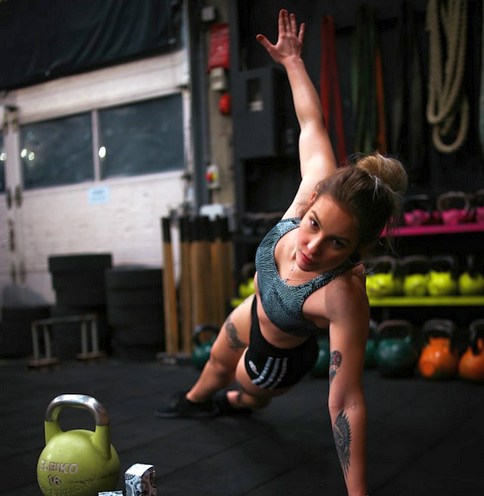
Plateaus are common in resistance training when progress seems to stall. Here are some strategies to break through plateaus:
- Vary your exercises and routine: Incorporate new exercises, change the order of your exercises, or modify the number of sets and repetitions to provide a new stimulus for your muscles.
- Increase intensity or weight: Gradually increase the weight or resistance to challenge your muscles and stimulate further growth and strength.
- Focus on proper nutrition and recovery: Ensure you’re providing your body with adequate fuel and recovery time for optimal muscle growth and adaptation.
- Seek professional guidance: Consult with a certified personal trainer or fitness professional for expert advice on breaking through plateaus and modifying your training program.
Conclusion
In conclusion, resistance training offers a multitude of benefits for both physical and mental health. By understanding the basics, preparing adequately, and progressing safely, beginners can embark on a fulfilling fitness journey. Remember to focus on proper form, track progress, and stay motivated to overcome challenges and plateaus. Consistency is key to reaping the rewards of increased strength, improved health, and enhanced quality of life through resistance training. If you’re ready to start your fitness journey, equip yourself with the essential knowledge and commitment to achieve your goals successfully.

Frequently Asked Questions
How Often Should Beginners Train?
Beginners should aim for at least two to three resistance training sessions per week, allowing for adequate rest and recovery between workouts. Gradually increase the frequency as your fitness level improves, but listen to your body and prioritize rest and recovery to avoid overtraining.
Can Resistance Training Be Done Without Equipment?
Yes, resistance training can be done without equipment using your own body weight as resistance. Exercises such as push-ups, squats, and lunges can effectively target major muscle groups. You can also use household items like bottles of water or backpacks filled with books as added resistance.
What Are the Best Resistance Exercises for Beginners?
Some of the best resistance exercises for beginners include bodyweight exercises that target major muscle groups, such as squats, lunges, push-ups, and planks. These exercises provide a solid foundation for building strength and can be modified to suit beginners’ fitness levels.
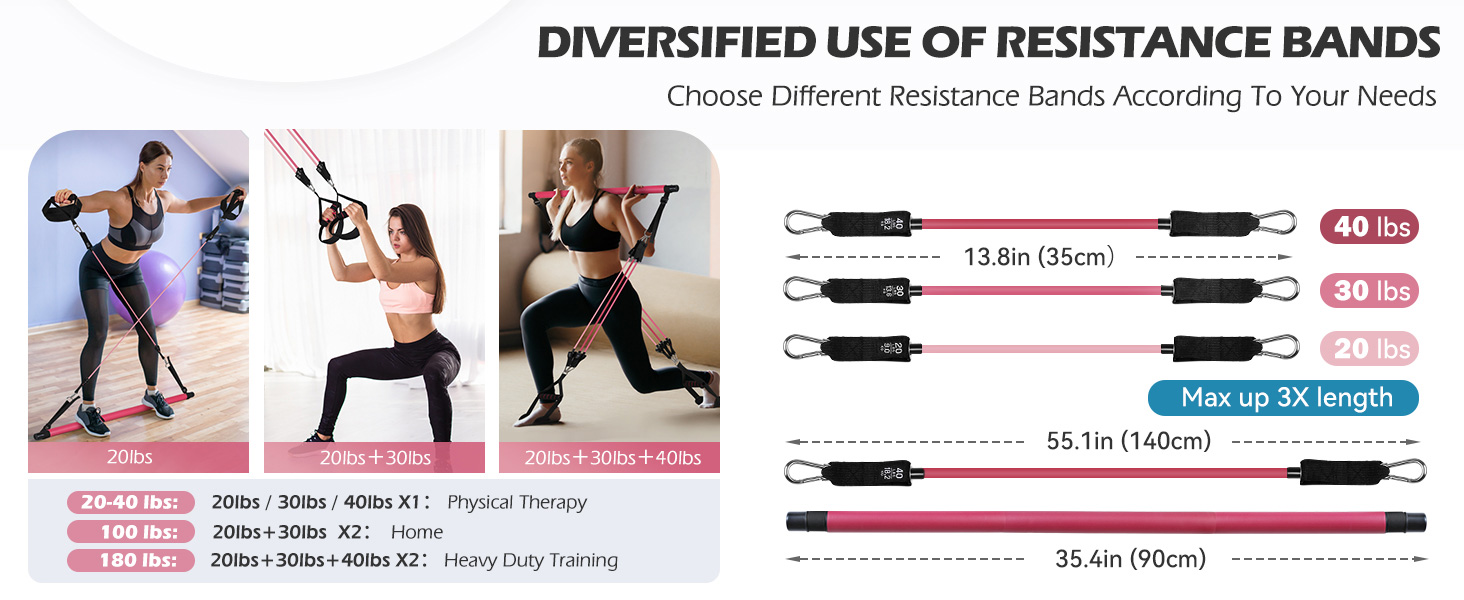
L-Carnitine: Benefits, Dosage, and Side Effects
Key Takeaways L-Carnitine supports fat metabolism and energy production. Benefits include enhanced exercise performance and improved heart health. Proper dosing minimizes potential side effects. Understanding…
Try Walking More for Better Health
Key Takeaways: Walking enhances fat loss by increasing calorie burn and boosting metabolism. Regular walking improves cardiovascular health, aiding in weight management. Low-impact nature of…
How To Optimize Your Weight Loss Efforts
1. Get Your Beauty Sleep for Optimal Weight Loss2. Natural Solutions for Weight Loss3. Stress Relief Strategies for Weight Loss4. Maximize Your Weight Loss with…
7 Key Hormones for Fat Burning
Key Takeaways: Hormones play a key role in regulating fat mobilization and utilization in the body. Important hormones involved include insulin, glucagon, epinephrine, norepinephrine, cortisol,…
Lose Belly Fat: 17 Effective Tips Backed by Science
Key Highlights Increasing protein intake, with healthy fats, and consuming probiotics can help in losing belly fat. Managing stress levels, optimizing sleep quality, and eliminating…
9 Best Cutting Supplements for a Shredded Physique
Key Highlights Pay attention to ingredients and their benefits, as well as select high-quality supplements through extensive research. Whey Protein Isolate, Essential Amino Acids, and…



